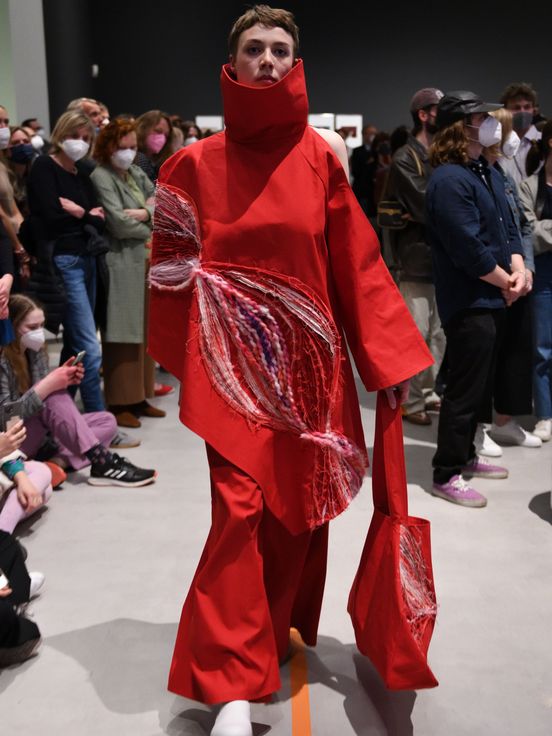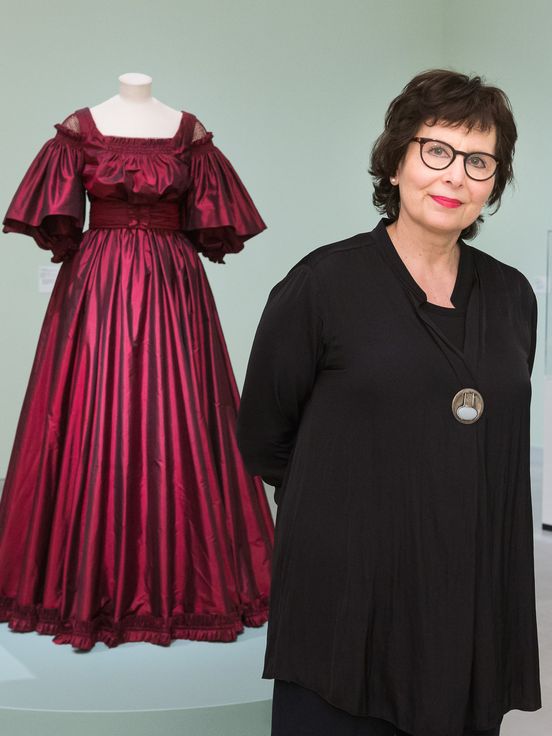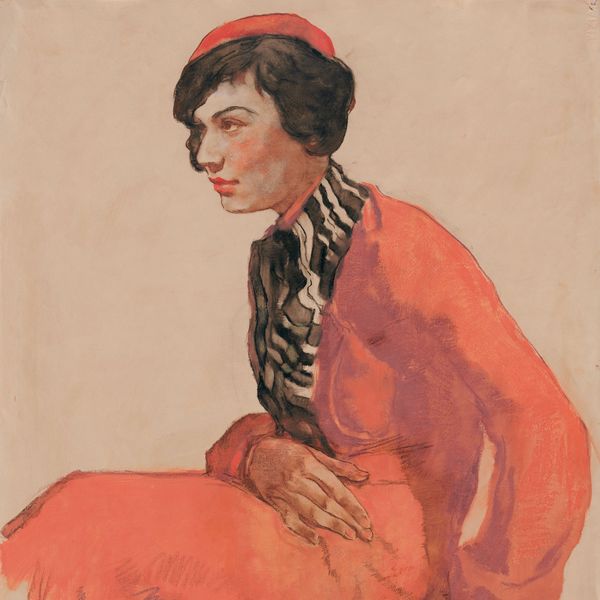Fashion in Contemporary Art
Contemporary artists such as Wiebke Siem, Ursula Sax, and Alexandra Hopf, who use clothing as sculptural or performative material, operate within the art system, although they appropriate motifs from the world of fashion.
With her textile objects and installations, Alexandra Hopf interprets historical sources, such as the Constructivist uniform clothing designed after the Russian Revolution by artists such as Varvara Stepanova, Vladimir Tatlin, and Alexander Rodchenko. For the exhibition, the artist realises Raoul Hausmann’s ‘Oxford trousers’ as a textile object. This resulted in a study of this garment, its creation, and its use. Alexandra Hopf developed an installation from this, which restages the garment by means of colour, movement, light, and sound.












